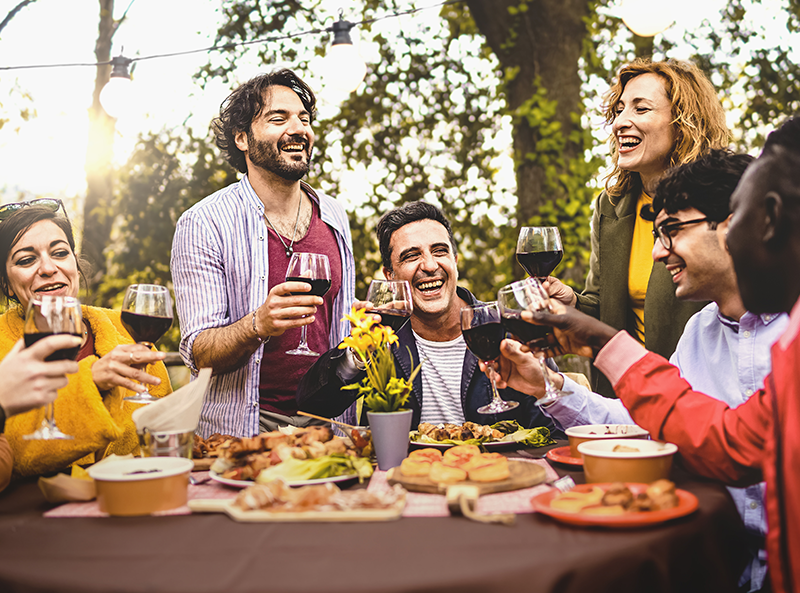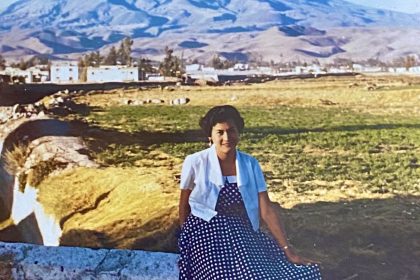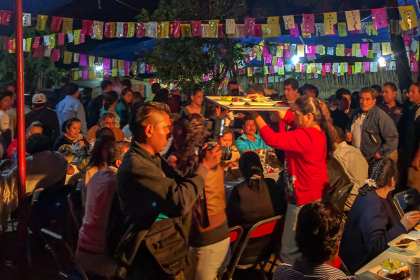[Intro]
Hola Chicas!
So happy to be here, meeting at the midweek for a check-in on how you’re doing and what you’re looking forward to for the weekend. It’s a nice little stop to pause and re-evaluate.
Pride celebration is picking up with passion and camaraderie and strength and gosh, what a rebound from a literal attack on freedom and freedom of identity and freedom to live. Dedication to culture and identity is such a blessing. There Is a tendency, and rightfully so, to shrink back when under attack because of culture and identity. But, with the courage and the embrace of community to come forward, we create such a more beautiful world than what other people are trying to do.
So, it really gives us a moment to pause and learn about each other, the struggles we’ve endured and the joy that pulses within us. Such a blessing for everyone out there, creating community, creating space, giving safe harbor to celebrate. Let’s do this every day, every month, but especially now in this month for the LGBTQ community.
Give me a little space here to reflect that sometimes the struggles are so difficult and we have to be so strong that we forget to look for joy. And more so, as I mentioned in last week’s episode, ‘Create Space for Grief’, you may not realize that grief is being experienced and the effects it has on you.
Grief happens through a lot of incidents and experiences, but we have not been taught, as a culture or as a society, how to recognize it. If we can’t recognize it, then it’s tough to know what to do now and how to care for ourselves, especially if the one piece that would help address feelings, emotions, and the trauma of grieving has been considered a stigma for generations: mental health care.
Mental health care has been an enigma here in the U S for generations. For those of us, with multicultural families, mental health, or any health for that matter, has been locked in a cover in a blanket of privacy. Being born into the scenario is really tough because it’s not always relevant to your own experiences and so it doesn’t provide much guidance or support.
It’s amazing how quickly in one generation the experiences completely change. You’re looking to the older generation for answers and for security and for guidance, but they’re like, “we don’t even know what’s happening”.
I’ve experienced this on both sides, being the daughter, looking upward, going, “whoa, this isn’t quite relevant”. And yet, being that irrelevant parent in return to my own kids, to my own daughters.
So much of living one’s culture and one’s identity is based on the soul. The deep passion for its beliefs in life. But if your soul is hurting, if it’s in a state of grief, then you have to rely on your brain, your intellect, to figure things out for you; telling you to go to sleep, telling you, to eat, telling you to go outside.
But if you’re mentally taxed and overwhelmed, then the need for support and access to mental health care takes precedence.
So really grieving involves healing, both the mind and the soul and in a culture and society that focuses on one or the other. Sometimes the healing process gets disrupted and not completed because if we feel that one part of us is healed, whether it’s the brain and we’re soothed or it’s the soul and we feel we can continue on, the other may still be struggling.
Multicultural Life of Mind and Soul
This is what we’re talking about today, the two step process in healing grief from a multicultural point of view, because it tends to involve living one culture by your soul and another by your brain. Your own heritage will be your soul beating within you, but you are operating in the culture you’re living in, that’s your brain.
And unfortunately, in the chaos of being a human, you have to navigate both. So we have to remember that most everything we do involves both, rather than one or the other, including healing the grief we experience.
Today’s episode explains why past generations were disconnected from this healing process.
Culturally, softening, the effects of grief was based on community support and faith and spirituality. Addressing grief, involved methods of healing the soul, the rudder of our being through spirituality and community gathering. People knew where you were in your grieving, and were there for you, without you saying a word, it is just part of the culture.
But like we mentioned earlier, the burden this places on one’s mind to suddenly have to do all the heavy lifting can be too much. Past cultural generations did not recognize this occurring. They had to just motor on. They had to plow through figuring that they would take the hit in order to provide for the family, in order to care for the children and parents. They would sacrifice their own well-being. It wasn’t an intellectual thought. It was just the known for the culture. And it gets in your DNA. Your brain cannot steer you away from it, unless it is intentionally taught to do so.
Hispanic culture is heavily weighted on relying on faith to get you through everything. But this only goes so far, especially if your soul is already wound. It really can’t help balance the strain of feeling pain and disconnect.
Plus speaking of mental health care or any medical care in the Hispanic or Latinx cultures was verboten personal privacy is off the charts. Seriously, shrouded in darkness mental health care was never an option and wanting to access it was, and is, considered a stigma still.
This stigma is not just a cultural thing. It comes from past generations here in the U.S., too. In my generation, growing up in the late sixties and seventies, the fathers had been to war. They had endured World War Two or the Korean war, or maybe both and Vietnam.
And they were struggling. They were in pain. But, the reaction here in the U S was to be a man. You are heroes, you are men who won the wars, be a man. And yet these men, these poor wounded men physically, emotionally, and my dad was one of them, became parents. That became the role models for my generation of men. So, there is this generational trauma occurring, both culturally and here in the U.S., of being taught to just be strong.
The point today is to figure out how we can pull the best from our past cultural generations to heal the soul. What still goes on in our culture, that the soul thrives on, while keeping the mind balanced to navigate without that rudder, without that soul, when it’s hurting.
What is this one-two healing that can be done now without disregarding the goodness of what’s come before us?
Cafecito shout out
As you’re thinking about that for a minute, I’m going to give you a heads up on this week’s #steamingcafecito moment
For any of you out there who don’t know, this is our way of supporting women, especially women of color, small businesses in any community. So, if you have one in your neighborhood or a global recommendation, then DM me on our lifelnxx Instagram, or email me through our website @lifelnxx.com.
This week, I went to the Petite Cafe in Oakland, California, to intentionally try one of their really unique lattes. It was amazing. I’ll tell you more about this amazing business at the end of the episode. So stay tuned.
Why Mental Health Care is a Cultural Stigma
Let’s get into today’s topic of healing, both the mind and the soul, when the mind has to take charge in order to protect the wounded soul. This has been such a touchy topic and it’s left current generations with absolutely no guidance. I’d really love to understand what’s needed, so we can put it in place and stop this void for future generations.
First, from a Hispanic point of view that I experienced, any medical condition, body, mind, or otherwise, was never spoken about in the family. My mother would not even tell us her age, let alone medical history, which is really dangerous. So, if they’re not talking about even the physical medical conditions that are in our family generations, then there’s zero opportunity to talk about mental health. Zero. It wasn’t going to be initiated or tolerated.
And for me, this coincided with an era that no one else knew differently, so we just accepted it as truth. But then when I had my own children, I realized something was missing. It was like, “wait, wait a minute. Something’s not right about what you’re saying”. My kids are just looking at me like I’m the zombie because there really is no connection that I am from another culture
They thought we are all part of this American society, that we’re all blended in. They’re looking at me, “how come my friend’s parents know this and you don’t?”. But, I didn’t know any better. It’s not my culture. And my culture said, don’t talk about it. Don’t talk about Bruno. But, we didn’t talk about Bob.
Why Mental Health Care is a Generational Stigma
Growing up in the U.S., there was no conversation about mental health. They were just trying to get the sex-ed under wraps. Like “how can we tell you what’s going on without really telling you what’s going?”. That is another humorous parental mishap on my part. That could be a whole other podcast parenting as a first-generation.
(laughing) I’m sorry. I can’t get a grip. (laughing)
We have our parents coming out of war being told to be men. Don’t talk about it. And, we’re growing up in a society that doesn’t want to talk about mental health. It doesn’t even call it mental health, just calls it mental. So, you can see where the backpedaling is going further and further back.
By the time we were young professionals, we couldn’t seek care to deal with struggle or being overburdened because it was a threat. It was a threat to us. Medical records were not private.
There was no HIPAA form to sign giving permission to business entities to access medical records. It was all a free game. If someone had sought care, it was entered into their records and that’s normal. That’s okay. We still do that.
But without the privacy form, and given the stigma over mental healthcare at the time, this time being the nineties and early two thousands, not that long ago, that record notation could prevent you from getting into college or getting a job or even housing. Now the system will claim this doesn’t happen, but it happens even today.
So, both culturally and generationally here in the U.S., we have a very large population of parents, maybe even grandparents, who have a distrust of talking about mental health care and definitely a distrust of the system offering mental health.
It’s such a huge void that we didn’t ever take the time to fill and therefore there’s so little support or guidance because we just didn’t know.
What if we band together to figure out how to bridge this? how to create support in both directions?
I really feel, both culturally and generationally, that community meant everything. Community can be the way to balance mental health and feed the soul. Community that is generally concerned for you on a daily basis is so necessary to mental wellbeing. How much relief would you have knowing that you’re not alone knowing that a text away or next door, someone was there to help you?
And at the same time, community can be healing the soul, giving you that purpose, having a place to live your soul out loud. Community creates belonging that you’re not dealing with life on your own, that you’re supported and that you have help when you need it. That is so powerful. Having community in our workplace and community at home may provide a consistency of belonging, easing the anxiety, easing the stress and having a place to find support.
We see the value of community from past generations. What does that look like for us now? How do we create a community that is present in the moment on a daily basis for each other? How do we continue a sense of belonging, especially during this time of isolation and separatism?
How to Begin Creating a New Community
Perhaps the most accessible way is to introduce yourself to your neighbors, especially now that there’s an emphasis on remote or hybrid working. Introduce yourself to your neighbors, whether in a building or neighborhood. It may be a bit awkward, but we had community in past generations, culturally and generationally.
Here in the U.S., community was a large focus. We even had ‘Welcome Wagon’ committees. Have you heard that? That’s actually what it was called, the ‘Welcome Wagon’. And it was this group of women that would bring a basket of goodies and helpful info to a new resident.
It made you feel like your neighbors were eager to support you. They understood the difficulties of moving into a new place and also the isolation. They wanted you to know they were there for.
You may have access to on-demand food, deliveries and stuff, literally stuff, and feel like you never have to leave your home. But, that delivery person is not going to sit and chat with you or offer emergency childcare or coffee when you wake up and realize, oh my God, you’re out and it’s dark o’clock. You need your coffee.
People are important. You are important. Working on developing personal relationships with the people next to you, regardless of age or profession or culture, creates a sense of belonging in your immediate daily life. This is your community.
Community can also be created around celebration. Now we know that we’re all good at celebrating anything. It could be something as simple as a Friday or a celebration of our differences that brings us together, too.
So what can you do about that? How would you develop a community around cultural differences? Maybe planning a gathering that celebrates cultural differences while enjoying the unity of that community.
Maybe a potluck gathering with food from each heritage, because it’s a great way to introduce yourself to people you don’t know. It gives you something to talk about and you’re able to tell some family stories and avoid the small talk of what do you do? and where do you work?
Really get into something that’s important to you because here again, you’re healing the mind in celebrating joy; joy of community, joy of gathering. And, you’re healing the soul because you’re talking about personal stories, the passion of your past generations, that people are eager to hear.
This helps the brain relax, take a break from worrying and having everything figured out. The brain can stop. And, as the brain relaxes, then the soul feels safe. And, when the soul feels safe, it heals. These are long lasting effects of wellbeing, both mentally and soulfully. There is joy and feeling connected and part of a community that will look out for you so you’re not alone.
When you feel you belong to something, the anxiety reduces and as the anxiety reduces, the body is calm. As the body is calm, the soul can heal. The soul can rise. It can experience outside of itself because things are at ease.
So let’s start there. Let’s start creating community by celebrating our differences and while celebrating our differences, joining in unity, I think that might go somewhere. We all have to play our part and this can be done as a whole, not just within your generation. We have to bridge each generation to make this continuity happen so that each younger generation doesn’t have to start over.
Create the space for older generations to share in it too, by nurturing a sense of safety and
you will succeed in making it part of your cultural heritage for the next generations. We will break the cycle, both culturally and generationally, if we do it all together rather than generation by generation, So if we do it all together, in unity, across cultures, across generations, I think we can really heal collectively and work in support of each other.
Show Us Your Cafecito Moments!
Now, for the #steamycafecito moment. I hope you were following the hints on our Instagram stories. And if you missed our previous shout outs of these fun, amazing businesses, then you can find them on our Instagram highlights under the cafecito icon and in the links tab of our website @lifelnxx.com, that’s L N double X.
If you got a chance to see the pixel. You may have noticed that Petite Cafe in Oakland, California has a sign on every table stating their gratitude for supporting small business. This is why I go out of my way to discover the women in diverse owned small coffee companies, because it’s not easy to strike out on your own and follow your passion.
And that’s why I encourage you to do this. No. I was ecstatic to meet the owner, Sheila Hollander in-person and discover she is Argentinian. There’s no mention of that on the website. Had I not asked her if she was the owner and we got engaged in conversation, I would have never known she was a Latina.
Totally understand the European south American choice for food focused. And just like many Latinas, she has strength and perseverance for opening the cafe just weeks before the shutdown in 2020. Unbelievable. Plus, the cafe is located at the center of Oakland’s Pill Hill, serving the medical community and keeping them healthy and happy sharing the joy with all the medical staff that have been so strained over the last few years.
So part of my ‘get out of my comfort zone’-‘don’t mess with my coffee’- ‘I just want to taste the coffee’-‘don’t even put too much milk in’ was to order something, for me, obscure. So I ordered a lavender latte. Oh, it was so silky delicious that I was going slack while drinking this caffeinated latte. I also ordered the seasonal AVO toast with lemon agrumato.
Yep. Didn’t know what that was either. Agrumato. It’s an Italian creation of crushing whole lemons with the olives to produce the olive oil. Again. Wow1 Who knew?
Check out our Instagram highlights for the links to the Petite Cafe and also, the links in our transcript of this episode on our website@lifelnxx.com
Remember to tag life at your favorite cafecito moments, maybe your favorite Latina on coffee place. I would love to see your favorites, especially from our global audience. I love seeing all the personal versions of coffee drinks in specialties.
Share the love of this podcast with your friends and leave a review for us on your favorite streaming platform. So we can stand conversation. Step into your truth. Ladies. I love you. Ciao!
[Outro]




